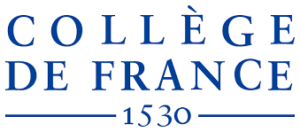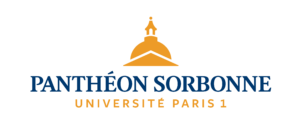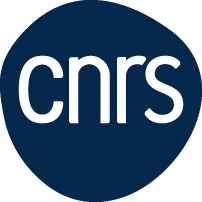David DURAND-GUÉDY
Thèmes de recherche
- Histoire de l’Iran médiéval
- Etats seljuqides
- Histoire urbaine
- Diplomatique
- Géographie historique
Archives bibliographiques (avant 2017)
Ouvrages et directions d’ouvrages
- David Durand-Guédy, Roy P. Mottahedeh et J. Paul, Cities of Medieval Iran, special issue of Eurasian Studies 16 (2018). Reprint Brill: Leiden, 2020.
- Durand-Guédy David (ed.), Turko-Mongol Rulers, Cities and City Life, Leiden-Boston, Brill, 2013.
- Durand-Guédy David, Büssow J et Paul J. (éds), Nomads in the Political Field, 1 special issues of Nomadic Peoples (2011).
- Durand-Guédy David, Büssow J et Paul J. (éds), Nomads in the Political Field, 2 special issues of Eurasian Studies 9/1-2 (2011).
- Durand-Guédy David, Iranian Elites and Turkish Rulers. A History of Iṣfahān in the Saljūq Period, Routledge, 2010.
Articles et chapitres d’ouvrages
- Durand-Guédy David, « Itinérance politique dans l’Iran turco-mongol (xie-xive siècle) », in J. Barbier, F. Chausson and S. Destephen (eds.), Le gouvernement en déplacement, Rennes: Presses Universitaires de Rennes, 2019, pp.269-289.
- Durand-Guédy David, « Isfahan during the Turko-Mongol period (11th-15th centuries) », in David Durand-Guédy, Roy P. Mottahedeh and Jürgen Paul, Cities of Medieval Iran, special issue of Eurasian Studies 16 (2018), pp. 253-312. Reprint Brill: Leiden, 2020.
- Durand-Guédy David, « Khargāh and other terms for tents in Firdawsī’s Shāh-nāmah”, Iranian Studies, 22/2-3 (2018).
- Durand-Guédy David, « Note about the Persian word Ḫargāh (Trellis tent) in a Turko-Sogdian context », Eurasian Studies 15/2 (2017), pp. 125-41.
- Durand-Guédy David, « Ismailism in Saljuq Isfahan. A Reassement », in E. Orthmann and P. G. Schmidl (eds.), Science in Context: The Dustūr al-munajjimīn and its world (Beirut: OIB, 2017), pp. 223-60.
- Durand-Guédy David, « Khargāh. An inquiry into the spread of the “Turkish” trellis tent within the ‘Abbāsid world up to the Saljuq conquest (mid. 2nd/8th- early 5th/11th centuries) », BSOAS, 79/1 (2016), pp. 57-85.
- Durand-Guédy David, « 1147. The Battle of Qara-Tegin and the Rise of Azarbayjan », Der Islam, 92/1 (2015), pp. 161-96.
- Durand-Guédy David, « New trends in the political history of Iran under the Great Saljuqs (11th–12th centuries) », Historical Compass, 13/7 (2015), pp. 321–37.
- Durand-Guédy David, « Goodbye to the Türkmens? The Military Role of Nomads in Iran after the Saljūq Conquest », in Kurt Franz and Wolfgang Holzwarth (eds), Nomadic Military Power in Iran and Adjacent Areas in the Islamic period (Wiesbaden: Reichert Verlag, 2015), pp. 105-34.
- Durand-Guédy David, « What does the history of Isfahan tell us about Iranian society during the Saljuq period? », in Edmund Herzig and Sarah Stewart (eds) The Idea of Iran, vol. 6: The Age of the Seljuqs (London and New York: I.B. Tauris, 2014), pp. 58-73.
- Durand-Guédy David, « The Türkmen-Saljūq relationship in twelfth-century Iran: New elements based on a contrastive analysis of three inshāʾ documents », in J. Büssow, D. Durand-Guédy and J. Paul (eds.), Nomads in the Political Field, special issue of Eurasian Studies 9/1-2 (2011), p. 11-66.
- Durand-Guédy David, « Where did the Saljūqs live? A case study based on the reign of sultan Mas‘ūd b. Muḥammad (1134-1152) », Studia Iranica, 42 (2011), p. 211-258.
- Durand-Guédy David, « An Emblematic Family of Seljuq Iran: The Khujandīs of Iṣfahān, « in C. Lange and S. Mecit (eds), The Seljuqs. Politics, society and culture, Edinburgh: Edinburgh Univ. Press, 2011, p. 182-202.
- Durand-Guédy David, « Ruling from the outside. A new perspective on early Turkish kingship in Iran », in L. Mitchell and C. Melville (eds.), Every Inch a King. Comparative Studies on Kings and Kingship in the Ancient and Medieval Worlds, Leiden, Brill, 2012, p. 325-342.
- Durand-Guédy David, « Malekšāh », EIr online (http://www.iranicaonline.org/articles/maleksah)
- Durand-Guédy David, « Location of Rule in a Context of Turko-Mongol Domination », in D. Durand-Guédy (ed.) Turko-Mongol Rulers, Cities and City Life, Leiden-Boston, Brill, 2013, p. 1-20.
- Durand-Guédy David, « The Tents of the Saljuqs », in D. Durand-Guédy (ed.) Turko-Mongol Rulers, Cities and City Life, Leiden-Boston: Brill, 2013, p. 149-189.
- Durand-Guédy David, « Help me if you can! An analysis of a letter sent by the last Seljuq sultan of Kirman », in R. Hillenbrand, A.C.S. Peacock and Firuza Abdullaeva (eds.) Ferdowsi, the Mongols and the History of Iran. Art, Literature and Culture from Early Islam to Qajar Persia, Tauris, 2013, p. 70-77.
- Durand-Guédy David, « The Political Agenda of an Iranian Adīb at the Time of the Great Saljuqs: Māfarrūkhī’s K. Maḥāsin Iṣfahān Put into Context », Nouvelle Revue des Etudes Iraniennes, 1 (2008), pp. 67-105.
- Durand-Guédy David, « Diplomatic Practice in Salğūq Iran: A Preliminary Study Based on Nine Letters Regarding Saladin’s Campaign in Mesopotamia », in D. Aigle and P. Burési (eds), Les relations diplomatiques entre le monde musulman et l’Occident latin (XIIE-XVIE siècle), special issue of Oriente Moderno, 87/2 (2008), pp. 271-96.
- Durand-Guédy David, « Mémoires d’exilés. Lecture de la chronique des Salğūqides de ‘Imād al-Dīn al-Iṣfahānī », Studia Iranica, 35 (2006), pp. 181-202.
- Durand-Guédy David, « Iranians at War under Turkish Domination: the Example of Pre-Mongol Isfahan”, Iranian Studies, 38/4 (2005), pp. 587-606.
- Durand-Guédy David, « Un fragment inédit de la chronique des Salğūqides de ‘Imād al-Dīn al-Iṣfahānī: le chapitre sur Tāğ al-Mulk », Annales Islamologiques, 39 (2005), pp. 205-22.
Articles encyclopédiques
- Durand-Guédy David, « Khāṣṣ-Beg b. Palang-Eri », EI3, 2020.
- Durand-Guédy David, “al-Ḥusaynī, Ṣadr al-Dīn”, EI3, part 2017-2.
- Durand-Guédy David, “Maḥāsen Eṣfahān’, Enc. Iranica, 2016.
- Durand-Guédy David, “Ḵojandis of Isfahan”, Enc. Iranica, 2015.
- Durand-Guédy David, “Berkyaruq”, EI3, part 2013-14, pp. 69-71.
- Durand-Guédy David, “al-Bundārī, al-Fatḥ b. ‘Alī”, EI3, part 2013-14, pp. 91-3.




